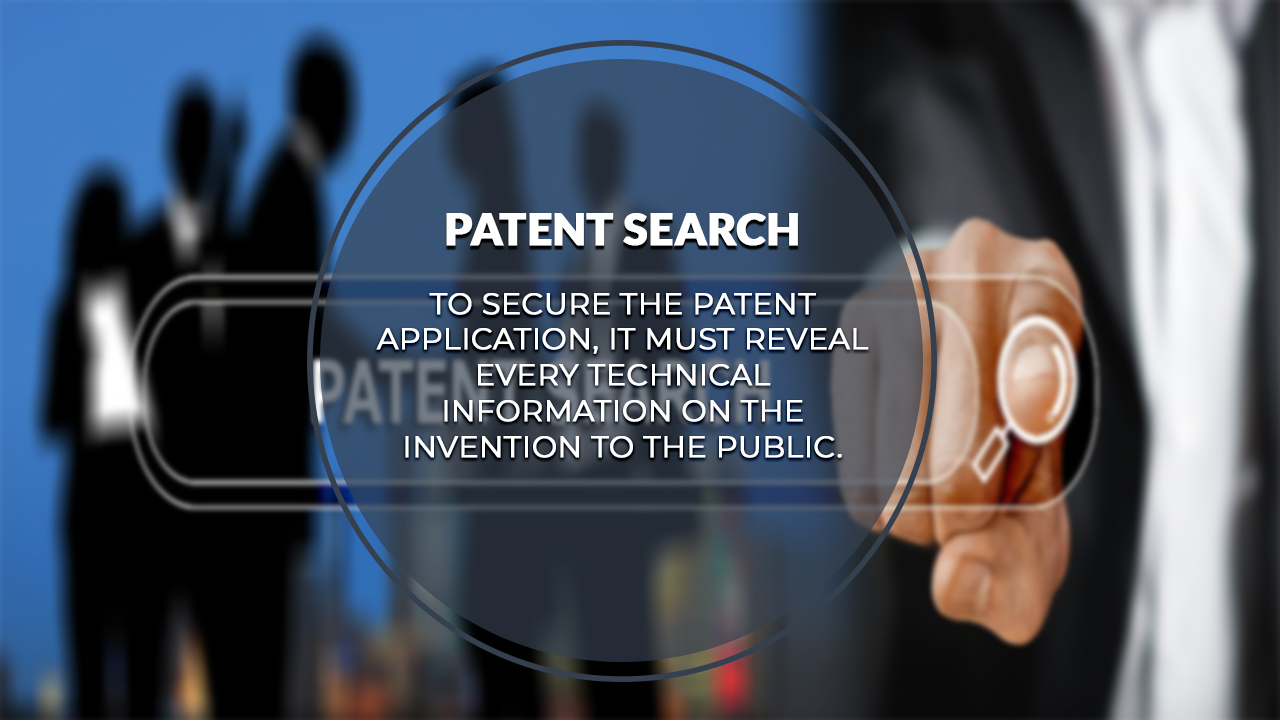Patent Search in India-Overview
A patent is granted to a person giving him the sole rights to his invention, it is granted for a new or novel invention, for having an inventive step and capability of industrial application. It is therefore advisable to conduct an extensive search before investing time, efforts and resources in developing any new technology in order to determine whether the product or service or idea is new or not and to avoid reinventing same or related idea and also to safeguard from infringing an existing patent right and accordingly conduct a patent search.
Track Your Status
Patent Search Registration Package
Free
- What we provide
- Documents required
- Free Consultancy
- Free Search Report
- Patent application number
Types of Patents
The various types of patent application searches which may be executed depending on the objective are:
Freedom To Operate Search (FTO) in India:
Freedom to Operate (FTO) search is also termed as Right to Use search. The companies before making huge investments like launching a new product or initiating a new line of research in order to develop the new product, undertake FTO search so as to ensure that the commercial production, marketing and use of their new product, process or service does not infringe the intellectual property rights of the others.
FTO involves a comprehensive search and analysis of patent literature i.e., un-expired patents and published patent applications. However, while conducting such verifications, it is imperative to bear in mind that patent protection is territorial and have limited scope and duration.
Freedom to operate searches can be used for the following purposes:
- Map out a technical field
- Determine possible infringement
- Determine the countries where possible rights apply
- Motivation towards commencement of a new development project
- Determine who is operating within a given field
- Assess the potential for new activities in an area
Novelty & Patentability Search in India:
Novelty & Patentability Search is a prior art search mostly conducted to determine if an invention meets the criteria of patentability in terms of novelty and non-obviousness. In Novelty Search, it is necessary that all the aspects of the independent claims must be elaborated within a single document.
Novelty & Patentability Search can be useful in the following:
- To provide clarification of whether an invention is new or not
- To evaluate invention disclosures
- To assess the inventive merit of new products
- To provide clarification of whether to file patent application
- To distinguish between state of the art and inventive step.
Patent Prior Art Search/ State of Art Search:
Prior Art search is conducted in order to determine the status of a technology in reference to development in the respective field. The search is conducted on various databases in order to obtain relevant patents and/or published patent applications which are parallel to the particular technology.
The purpose of conducting prior art search is also to support the necessity of the current invention.
Once a Prior Art search is conducted, it will clearly determine the technical problems associated with the existing technology and the solution for the same and bring out the differences between the claimed invention and prior art.
Main purpose of Prior Art or State of the Art Search are as follows:
- To determine state-of-art of technology
- To develop ideas for R&D
- To cut down R&D investment significantly
- To develop new technical solutions
- To assess specific technology
- To update into technological trends
Validity / Invalidity Patent Search:
Invalidity or Validity search is performed after the grant of patent in order to decide the novelty and inventive step of patented invention at the time when patent application was made. These two searches are identical except for the desired outcome (valid or invalid patent claims) of the search.
Validity/ Invalidity Search can conduct for the following purposes:
- Invalidate Patent when threatened with infringement
- Patent Enforcement preparation
- Patent Licensing
Patent Landscape:
Patent Landscape is useful in getting an overview of a particular technology or domain, its evolution, competitors in the industry or chronological development in the domain and provide information about the latest trends and specific developments in the industry.
The analysis and insights from the report helps in determining R&D and IP strategy of the company or industry and to identify the economic value of the patent portfolio.
A patent landscape analysis helps to evaluate:
- Technology capacity
- Technology white space
- Technology leaders and their IP strategies
- Technological positioning of companies and their chronological changes
- Strengths and weaknesses of patent portfolios
- Innovative ideas of companies
- Filing trend of companies in a technology domain
- Foreign filing trends etc.
Need Consultancy? Ask Tax Seva Kendra Expert@ Rs. FREE
- Free Consultancy
- Online Documentation
- Anywhere In India





